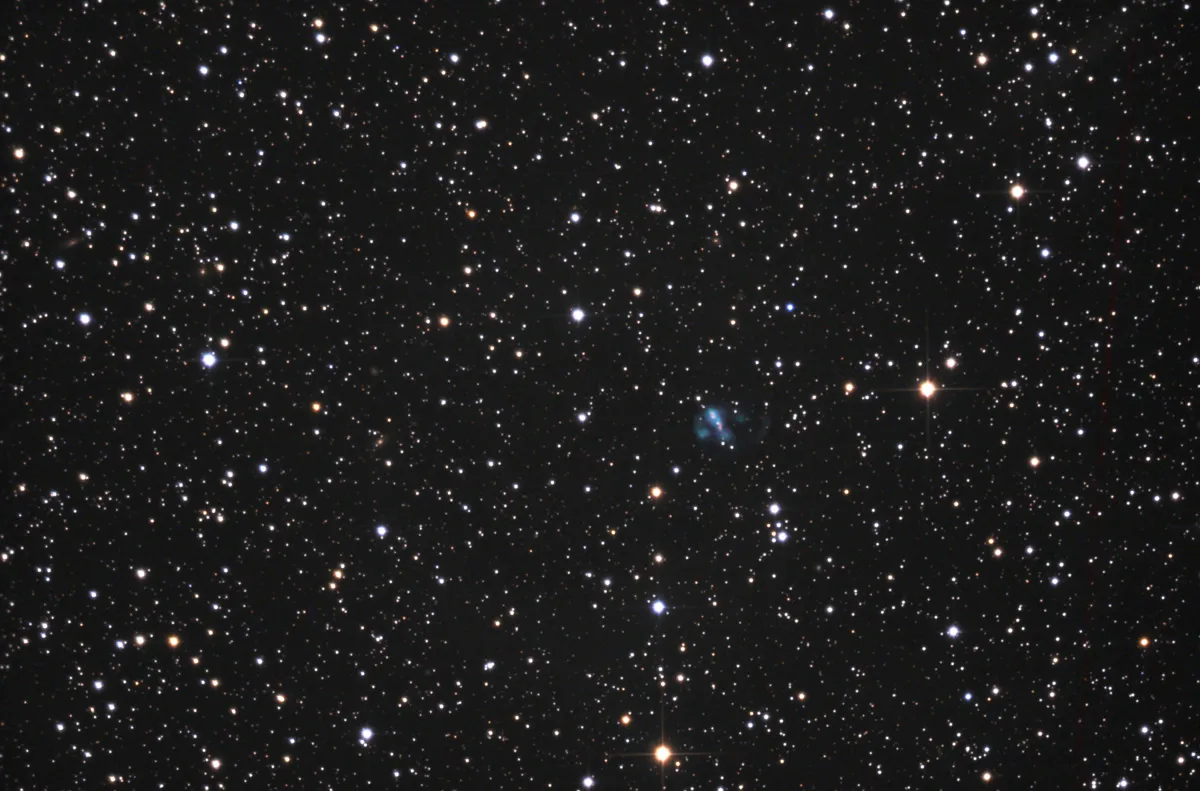Planetary Nebula NGC 6765

History
This nebula of about magnitude 13 was first sighted on 28 June 1864 by the German astronomer Albert Marth and independently on 12th July 1866 by the American astronomer Truman Safford and on 2nd July 1870 by the French astronomer Édouard Stephan. In 1888 it was included by Dreyer as NGC 6765 in his «New General Catalogue of Nebulae and Clusters of Stars». He noted: «weak, small, elongated» [196]. Its true nature as a planetary nebula was not recognized until 1946 by Rudolph Minkowski. [141]
Physical Properties
The distance to Earth is 2334 pc, about 7600 light years. [145]
| Designations | PN G062.4+09.5: NGC 6765, PK 62+09.1, ARO 185, M 1-68, VV 221, VV' 482 |
| Right Ascension (J2000.0) | 19h 11m 07s |
| Declination (J2000.0) | +30° 32' 54" |
| Dimensions | 40." (optical) |
| Radial Velocity | -72.0 ± 25.0 km/s |
| Expansion Velocity | 35.0 (O-III) km/s |
| C-Star Designations | AG82 349 |
| C-Star Magnitude | V: 16. |
| Discoverer | MINKOWSKI 1946 |
Finder Chart
NGC 6765 is located in the Lyra constellation. It is best to start looking at the globular cluster M 56, which is located about halfway between the stars Albireo (β Cygni) and Sulafat (γ Lyrae). From there one climbs to the 7.8 mag bright star HD 180187 on to the double star HD 179709 (7.9 mag, 9.1 mag, 10 arc seconds distance), which is on the same declination about 25 arc minutes west. Another 20 arc minutes to the northwest of this is the planetary nebula NGC 6765. On 9 July it is in opposition to the Sun and crosses the meridian at local midnight.
